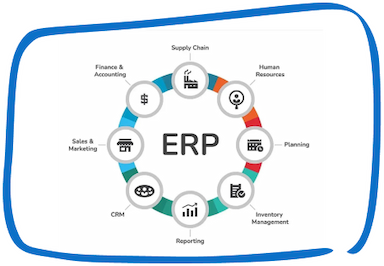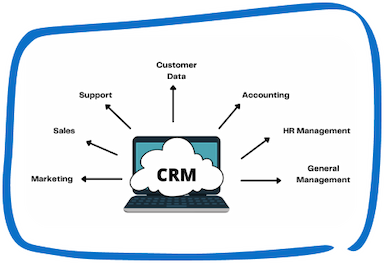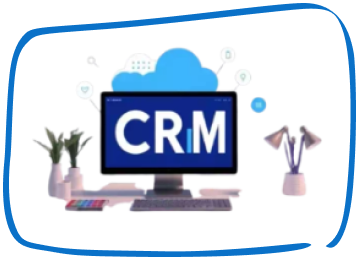Cash flow is the lifeline of your small business. When money moves smoothly in and out of your business, you can pay your workers, suppliers, rent, taxes, and other costs on time. Getting this balance right can be tricky. A recent study shows that nearly 3 out of 5 small business owners struggle with cash flow.
Having money on hand also lets you invest in your business. Sometimes you need to spend money to make money on things like tools, technology, marketing, branding, and hiring staff. In this article, we will show you how to improve and manage your cash flow using Sage 50 accounting software.
How to Improve Your Cash Flow in 5 Steps Using Sage 50
Here are some ways in which you can improve cash flow management with Sage 50
- Improve Your Receivables With Sage 50
When you look at your finances in Sage 50, you might see that some customers are slow to pay you. This can cause big problems with your cash flow, especially if you've already spent money on materials and suppliers like you might have to in building work, for example.
Streamline Your Business with Sage Software
Take control of your accounting, payroll, and business management with Sage’s powerful, user-friendly software. Tailored to meet the unique needs of businesses in the Middle East, Sage ensures seamless operations and growth.
A. Use Sage 50 to Find Ways to Get Your Money Faster.
You could set up electronic payments directly from invoices, and make sure your invoices look good and professional using Sage 50's templates. You can encourage customers to pay their bills by offering discounts if they pay early. Even if you make a bit less profit, it's often better to get the money in your hand quickly.
B. Be Careful With Customers Who Have Bad Credit.
There's always a risk when you give credit, but you can reduce this by asking customers to fill out a form before you let them buy now and pay later.
C. Making a Sale Might Not Be Worth the Trouble of Late Payment.
If needed, charge them interest as outlined in a clear credit policy that explains exactly how you've let them buy on credit.
- Boost Sales and Try Different Prices Using Sage 50
How you do this depends on what you sell and what people want. For example, you could raise your prices if you think customers will pay more. You might sell less but you could make more money.
Use Sage 50 to research 3 things about pricing:
- Your costs and what you need to make money
- What your competitors charge
- What prices do people in your target market expect
- Or, you could lower prices or offer discounts. After doing your research with Sage 50, try to find the best price that works for you and your customers.
- Handle Your Payable With Sage 50
It's not just about managing money coming in. You need to handle what's going out too. Here's how you can do that with Sage 50:
- Cut unnecessary costs. Don't pay for anything you're not using, like software you've stopped using.
- Cut any spending that isn't helping your business and carefully look at all your costs in Sage 50.
Find ways to manage your payable better. Using Sage 50 accounting software in the cloud and making electronic payments will make it easier to see when money goes out. You can schedule your payments, so it doesn't hurt your cash flow at a bad time or take too much money out of your account at once.
Keep friendly with suppliers and lenders, as it might help you get better payment terms. They might be more flexible than you think, but they won't help if you don't ask.
- Look at Your Finance Options Using Sage 50
There could be any difficult times you might have to face while running your business. While the pandemic made many businesses look for loans and grants to keep going and pay workers, today's changing economy still has its challenges. Make sure your business can survive if you run short of cash. Act fast and decisively to turn things around follow points 1, 2, and 3 above to do this with Sage 50 accounting software.
Even if your cash flow looks good, sometimes you need to borrow money to get extra funds. Maybe you want to grow your business or need new equipment. You might need extra stock to fill a big order. Taking out a loan can be a good way to get working money if you're clear about why you need it and can pay it back over time or early to save on interest.
Here's a quick list of some options you can track in Sage 50:
- Bank loans: If you want to go the traditional way, banks are good for loans as you might already have an account with them. But they might be slower and have more rules than newer lenders.
- Non-banks: Non-banks are money lenders that don't offer normal banking services. Non-banks usually have fewer requirements than banks. New tech like apps and online communities means you have more choices than ever for borrowing.
- Invoice finance and asset-based lending: This is especially useful if customers are slow to pay their bills. Basically, invoice financing lets you use your unpaid bills as security for a loan. You pay a fee to the lender for borrowing the money.
- Invoice factoring: With invoice factoring, you sell your unpaid bills instead of waiting for the client to pay, usually for about 70% to 90% of what they're worth. Once the client pays the factoring company the full amount, the company then pays you the rest. They'll charge you a fee, usually about 1% to 5% of the total bill.
- Business line of credit: Also called revolving credit, this is where you borrow money either all at once or in smaller amounts until you reach the agreed limit. Each time you borrow becomes a separate loan to be paid back on a schedule. As with any loan, you pay interest. Unlike an overdraft, you don't have to go into the red on your bank account to use a line of credit.
- Keep Track of Your Inventory With Sage 50
Making sure you can meet your client's needs while also avoiding tying up cash in stock and paying for storage is tricky, especially when so much is uncertain in every business area.
Good inventory management is crucial. Like with money management, regular forecasting helps. You can use Sage accounting software to for regular checks with customers, suppliers, market trends, and analysis of past sales.
Here's a simple example: If you're running a grocery store, you will need to watch the weather as it'll help you know when to stock up on barbecue food or hot chocolate and comfort foods. Keep these in mind:
- Sage 50's cloud-based inventory management with real-time analytics is helpful, as is any system using data to help make smart decisions.
- Sage 50 accounting software can help you find new storage space quickly, improving your chances of making money from products you can't sell the usual way.
- Use a "first in, first out" approach to reduce chances of food going bad or other items becoming out of season.
- Keep a closer eye on more expensive items than those worth less money.
- Use Sage 50 to predict when you need to reorder so you can tell suppliers in advance.
- Check your receiving process is fast and good. You don't want new stock getting damaged, going off, or sent to the wrong place for storage.
On the other hand, make sure you send out orders quickly and carefully and be ready to get rid of stock that won't sell.
Wrapping Up
Upgrade to Sage – Simplify Your Business Processes
Discover the efficiency of Sage software for financial management, inventory control, and HR solutions. Stay ahead of the competition with our cutting-edge tools designed for modern businesses.
If you follow these practices, you can easily improve your cash flow management. Along with these practices, think about using Sage 50's cash management features to make your money processes smoother. More than that you can reach out to a Sage partner like Penieltech who can help you make smart decisions and keep a steady positive cash situation.
Speak with Our Team!
4.9 Stars
1k+ reviews on






